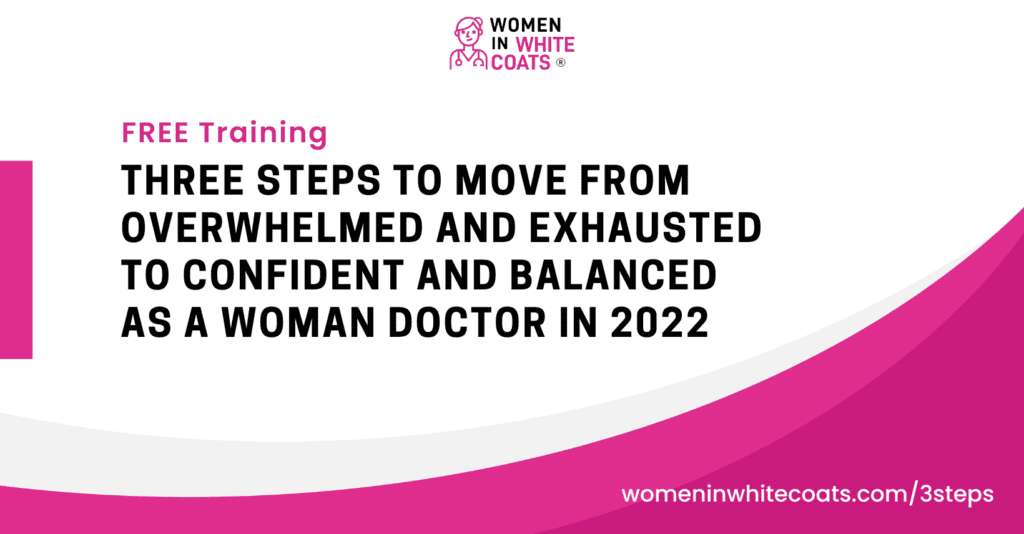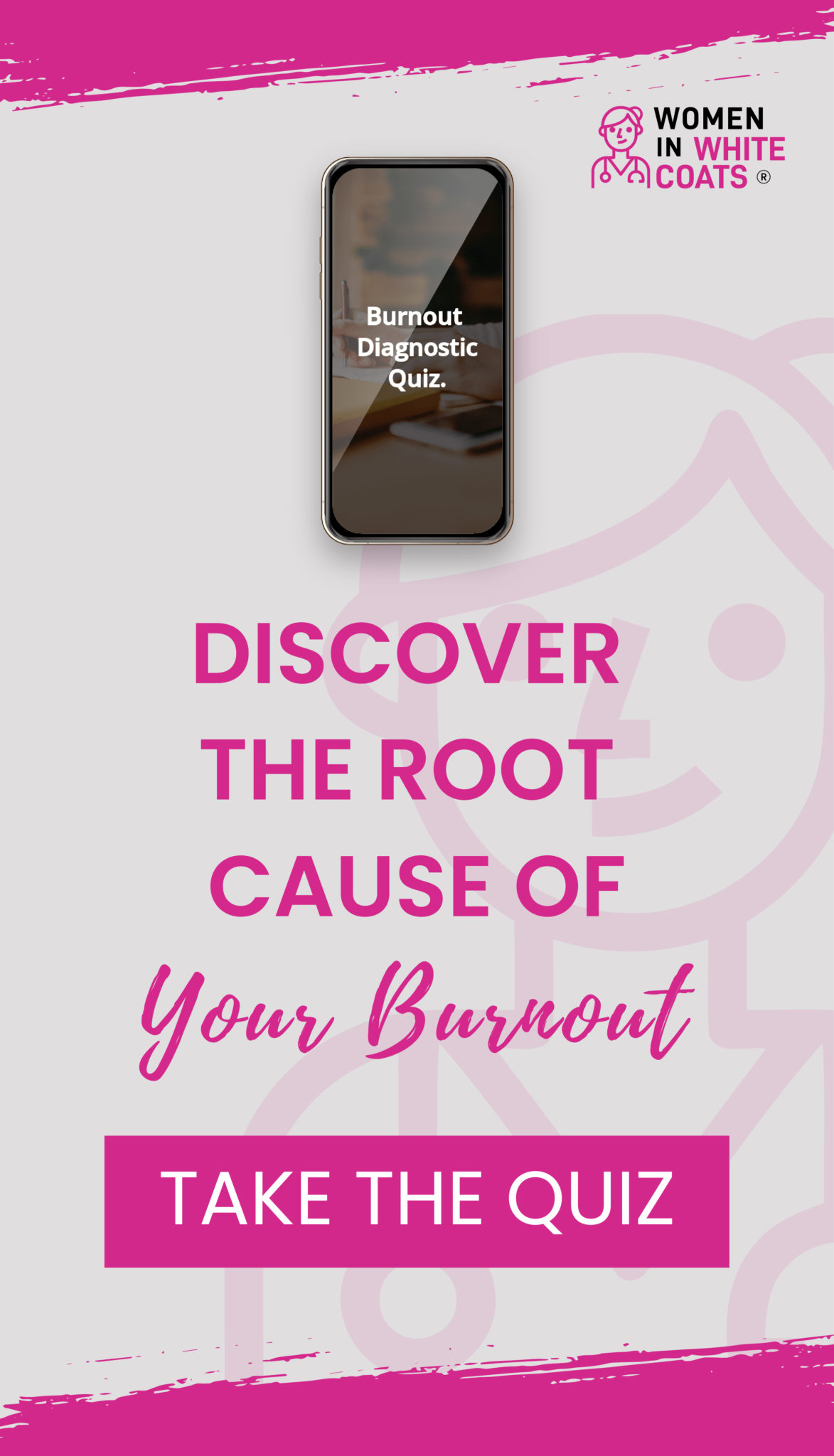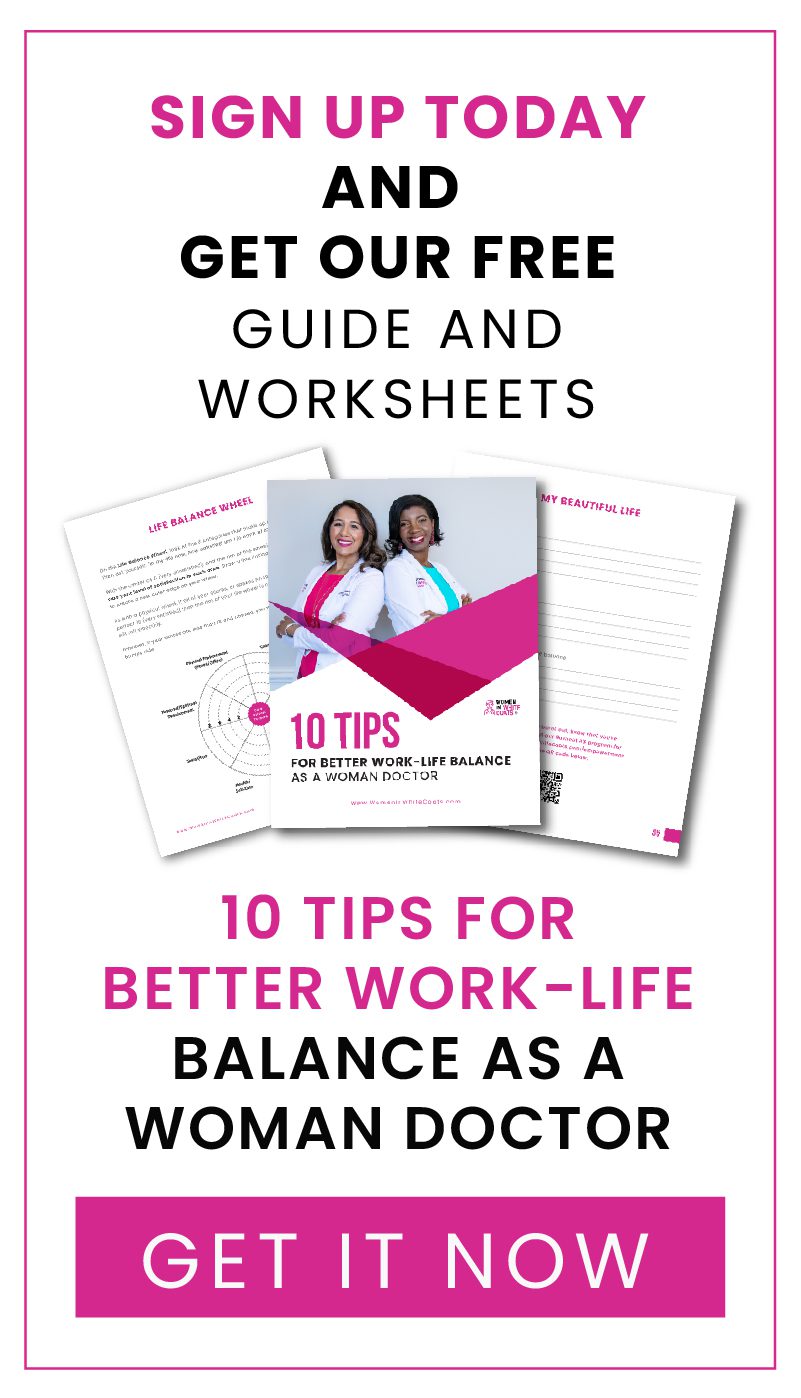This week on the blog, we are sharing an excerpt of the chapter Dr. Archana Shrestha wrote in the third installment of The Chronicles of Women in White Coats! Keep reading to learn more about her personal experience with burnout:
It’s the summer of 2020, and there’s a huge smile on my face as I blast The Soup Dragons’ “I’m Free” on my car stereo. I am beaming ear to ear as I drive away for the very last time from the hospital where I had worked for my entire attending career. For many years I had been dreaming of this very moment where I walk out the double doors of the ER ambulance bay and never return. I don’t want to be a hero any longer, and I decide leaving what had been my dream job to pursue my other passions would be the best strategy.
Like a professional athlete who realizes it’s time to retire, I decide perhaps it’s time for me to end this chapter of my life in the ER and pivot. Before I put my car in drive, I take a selfie and record a video so I can remember this moment because in many ways it’s surreal. I am thankful that I made it out of my stint working in the ER alive and relatively intact. I have had physician colleagues who have stroked out while seeing patients in the ER, died driving home late at night from the hospital or been so burnt out and depressed that they have taken their own lives. How is it that I ended up here? How had I gone from wanting nothing more than to be an emergency physician in my 20’s to now wanting nothing more than to leave my job in my 40’s?
So much life happened after I decided to pursue becoming a doctor. I met my husband, got married in residency, and had two kids early in my career as an emergency physician. Nothing can prepare you, not even the stories and advice of other mothers, for how much life changes when a woman becomes a mother. Her whole perspective shifts, and she has a natural pull to be with her kids.Young children also want nothing more than to be with their mothers.
When I would pull my car out of the driveway to go to my night shift, my daughter, as a toddler, would stand at the front window of our house, her hand pressed against the window and big tears streaming down her little face. I would bring home the occasional scratch and sniff sticker from the hospital or a danish from the cafeteria to make up for leaving her and to let her see there were some perks for her when I went to work. She would say, “Mommy, it’s not fair that you have to work on weekends and holidays when all the other mommies are off. Can’t you work at my school?” “No, Sweetie, they have a school nurse there but not a school doctor,” I would explain.
My daughter, like little John F. Kennedy Jr., would sit at my feet under my desk just to be near me in my home office as I studied for certification exams or completed other work. My kids would fight over me taking them to bed on the nights I was actually home. Their time with me was so precious, especially since my ER schedule was so unpredictable, and they couldn’t figure out a pattern to when I would be home.
I would go to my shift at work, rush out to pick up my kids from daycare and come home to the second shift of taking care of children and the household. All the while I was trying to be a supermom, who would sign up to volunteer in their school and plan fun playdates and elaborate birthday parties. Yet, no matter how much I did at home or work, I felt I was failing miserably in all arenas of life. I was buffering away my feelings by digging into a big bowl of ice cream after the kids were in bed while I binge watched Netflix late into the night. This was my reward for making it through a stressful day of work in the ER followed by an evening with the kids. It was a chance for me to numb myself to the feelings of mom guilt and work stress.
I wasn’t taking time for myself to exercise regularly, and even though I had been an athlete much of my life, I was finding myself a little out of breath chasing after my kids or going up the stairs. I was buying larger and larger clothes and was also feeling low on self-esteem. My mood was off, and I was crabby and on edge much of the time and had a negative attitude both at home and work.

When I was at work, I wanted nothing more than to be home. Oftentimes when I was at home, I was thinking about something that had happened at work and feeling the tension of the ER environment or unprocessed emotions from tragic or difficult cases at work. Sometimes I would come home after midnight from a shift, crawl in bed next to my husband and weep as he held me in his arms. He could see the toll my job was taking on me and my ideals and how we physicians were being beaten down by a broken healthcare system.
Protocols, never-ending work requirements and uncompensated meetings piled up. Patient satisfaction scores, door-to-doctor times, patients per hour, productivity and a myriad of other metrics were emphasized so heavily I felt squeezed with no room to be the doctor I wanted to be to my patients.
I felt stagnant in my career as though during each shift I was living out Groundhogs Day with no place for me to grow. The thought of an administrative position, which seemed the only option for professional growth in my field, did not interest me. There were also all the interpersonal interactions with patients, consultants, admitting doctors, nurses, directors and administrators that had to all be navigated delicately despite many difficult personalities in the mix. As healthcare costs rose with little increase in insurance reimbursement, we doctors, physician assistants and nurses faced staffing cuts and were asked to do more with less.
The corporatization of medicine frustrated me – cajoling me at times to align more with its bottom line than with the best interest of the patient for whom I had taken the Hippocratic oath. It left me feeling like a replaceable commodity instead of a highly trained and valued physician and healer. I’d lie awake at night wondering how in the world I would be able to last until retirement age in this career?
What I was experiencing was physician burnout, something that so many in healthcare are facing with alarming rates. Burnout is described as long-term unresolvable job-related stress that leads to exhaustion, cynicism, feelings of detachment from one’s job responsibilities, and a lack of sense of personal accomplishment. In 2020, before the COVID 19 pandemic hit, 42% of all doctors and nearly 50% of women physicians reported burnout according to a Medscape survey. These estimates are likely higher since the pandemic began as now even more physicians say they may leave patient care earlier than expected.
Burnout can even happen commonly among young women who are just starting in their careers. The demands of a medical career are already high, but when you add in other stressors such as gender discrimination (which 70% of women physicians report experiencing) and life changes such as getting married, family planning or becoming a new mother, it can be enough to cause even physicians, who are inherently highly resilient, to feel some level of distress.
What’s worse is that women often blame themselves for feeling burnt out as if there is a defect in their very character. Even the term burnout is a type of victim-shaming and places blame on the individual for not being tough enough to handle their environment instead of pointing out all the systemic and institutional forces that led the individual to feel the constellation of symptoms in the first place. In the past few years physician thought leaders such as Drs. Wendy Dean and Simon Talbot have begun to reframe what is really going on when physicians are distressed in the way I was; they now call this phenomenon the moral injury of healthcare. Borrowing language used in the context of war soldiers forced to commit acts counter to their morals they define it as such: “Moral injury [of healthcare] describes the situation which results in distress: the double bind of knowing how to care for patients but being unable to do it because of the constraints built into our systems of care. Of particular importance is that moral injury, as we frame it, does not refer to personal moral conflict, but to the conflict of being unable to uphold the professional standards of medicine.”
To finish reading Dr. Nichols’ chapter and many more like it, you can purchase The Chronicles of Women in White Coats 3 by clicking here.



